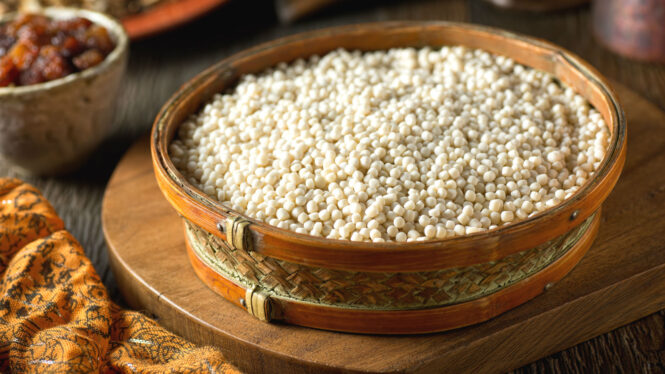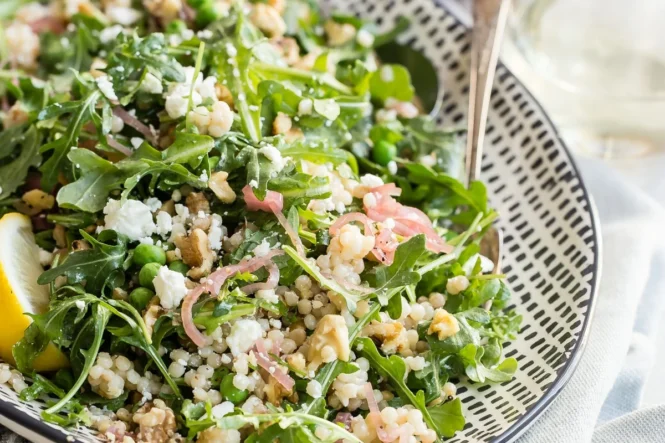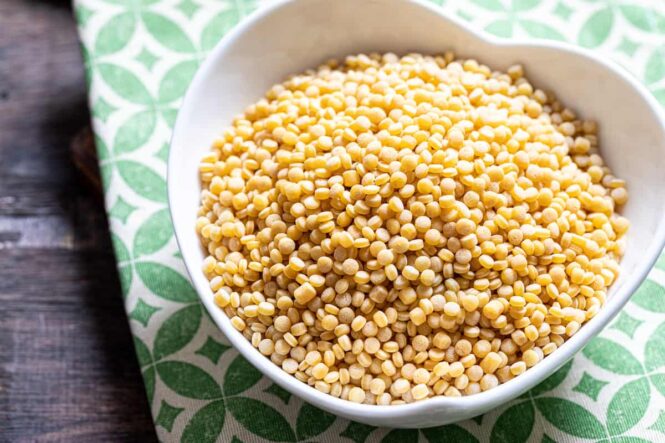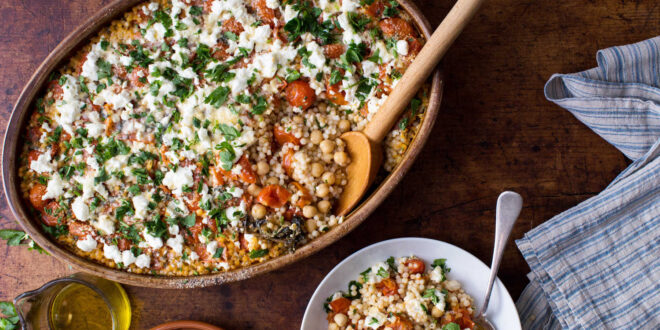Pearl couscous has gained popularity over the last few years. Don’t get us wrong, it has always been around, but since people have become more aware of the nutrients and benefits of the foods they are consuming, couscous has made a huge comeback. Not only is couscous a nutritious ingredient that can be customized as desired, but it is also a cheap and quick option to incorporate into our diets. But do you actually know what couscous is?
Pearl Couscous in History

In 1953, during the austerity period that included food rationing measures due to the economic crisis in Israel, then Prime Minister Mr. David Ben Gurion asked a food manufacturer to create a wheat-based substitute for rice. By that time, thousands of Jewish people migrated from different parts of Europe and America to the recently created state of Israel. That situation caused a food shortage that, if not solved in the short term, would dramatically affect the growing population.
It was then that Ptitim was born. First inspired by a rice-like shape, it later adopted the characteristic form which we know and consume today. Many people believe that couscous is a type of grain when in reality it belongs to the pasta family: it is made by simply mixing water together with wheat flour or semolina; once the dough is formed, it is shaped into small pasta balls and toasted in the oven to get their characteristic nutty flavor.
In the following years, the Israeli people began calling it “Prime Minister’s couscous” or even “Ben Gurion couscous”. Eventually, the name pearl couscous prevailed and that’s how it is known today.
Pearl couscous and your health

The healthy benefits of pearl couscous are also worth being mentioned. One of the tiny ball-shaped pasta’s main nutrients is selenium, an important antioxidant that prevents cell damage and that might also help in reducing the risk of cancer. Selenium also boosts our immune system, lowering oxidative stress in our bodies and allowing vitamins C and E to regenerate.
Also, if you happen to follow a plant-based diet, you must be aware of the importance of incorporating protein-packed foods to your meals; pearl couscous provides about six grams of protein per cup or 173 gr. Last but not least, pearl couscous is extremely easy to cook; besides, its neutral flavor makes it perfect to pair with almost any other ingredient (it is even a great option for sweet recipes!), it can be incorporated into soups, and salads or as a side dish.
Some nutritional values of pearl couscous
Like many other staples, pearl couscous can be measured in cups. So, let’s see what 1 cup (173 g) of cooked pearl couscous contains:
- Calories: 176.
- Protein: 6 g.
- Carbohydrates: 36 g.
- Fat: 1 g.
- Fiber: 3 g.
- Sugar: 0 g.
- Sodium: 11 mg.
Besides, pearl couscous is a good source of complex carbohydrates, essential elements to provide energy to the body. It also contains a moderate amount of protein and fiber, which helps keep you feeling full and satisfied.
It is low in fat and does not contain any cholesterol or sugar, which makes it perfect for any weight-control diet.
Regarding vitamins and minerals, these are present in pearl couscous:
- Thiamin (vitamin B1)
- Riboflavin (vitamin B2)
- Niacin (vitamin B3)
- Folate (vitamin B9)
- Iron
- Magnesium
- Phosphorus
- Potassium
Continue reading this article to find out the best way to cook pearl couscous and an incredible recipe you can make at home.
How to cook it to perfection?

It doesn’t matter what you cook your couscous with, following these basic and super easy steps you will make it perfectly each time:
- First, rinse your pearl couscous with plenty of water. Bear in mind that, to prepare it, you will need 1 to 1 and ¼ cups of water (or vegetable broth, or any other kind of broth if making a savory recipe) for 1 cup of dry couscous.
- Add your water to a large pot and bring it to a boil. Once the water starts boiling, reduce the heat and add your pearl couscous. Cook over low heat for about seven to eight minutes.
- Remove the couscous from the heat, drain it, and transfer it to a bowl.
Some cooks recommend slightly frying the small pearl couscous grains previously over a frying pan with some oil or butter, as you’ll see in the following recipe.
Easy, fresh and delicious recipe
With just ten ingredients and in less than sixty minutes, you can have a great, refreshing and healthy salad packed with nutrients.You can order your pearl couscous here: riceselect.com/product/riceselect-pearl-couscous.
All you need to make it is the following:
- Olive oil (butter will be good as well)
- Pearl couscous, 200 gr
- Minced garlic
- Lemon
- Red Onion
- Cucumber
- Cherry tomatoes
- Fresh mint
- Fresh parsley
- Black pepper
- Salt
In a saucepan, put some olive oil to taste (it can be as little as one tablespoon, it depends on your taste), let it heat and add the pearl couscous.
- Stir-fry it for a couple of minutes, until the nutty flavor of couscous is released and it becomes translucent. Add salt to taste and minced garlic, continue stirring.
- Next, cover the couscous with a generous amount of water and let it boil. After the water is boiling, lower the heat and let the couscous simmer for seven to eight minutes.
- Drain the couscous, cover it with some olive oil, and set aside.
- Now it is time to chop the vegetables and make the salad. Finely chop one red onion, the cucumber and some fresh parsley and mint.
- Cut the cherry tomatoes in halves and add them, with the rest of the ingredients, to the couscous bowl we set aside earlier.
- Stir all the ingredients together with the zest of a lemon, its juice and some olive oil. Add some salt and black pepper to finish and enjoy!
This is a great, light and fresh salad, perfect for a summer dinner. You can enjoy it as a side dish with any fish or poultry meal. Or even alone.
 Imagup General Magazine 2024
Imagup General Magazine 2024



